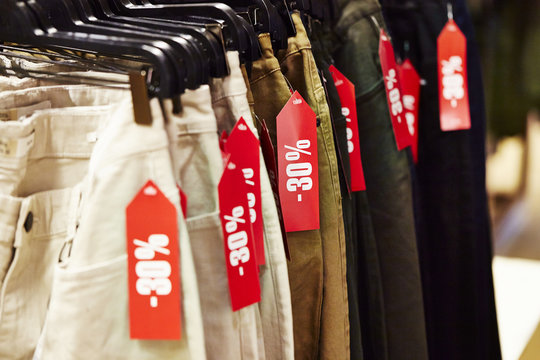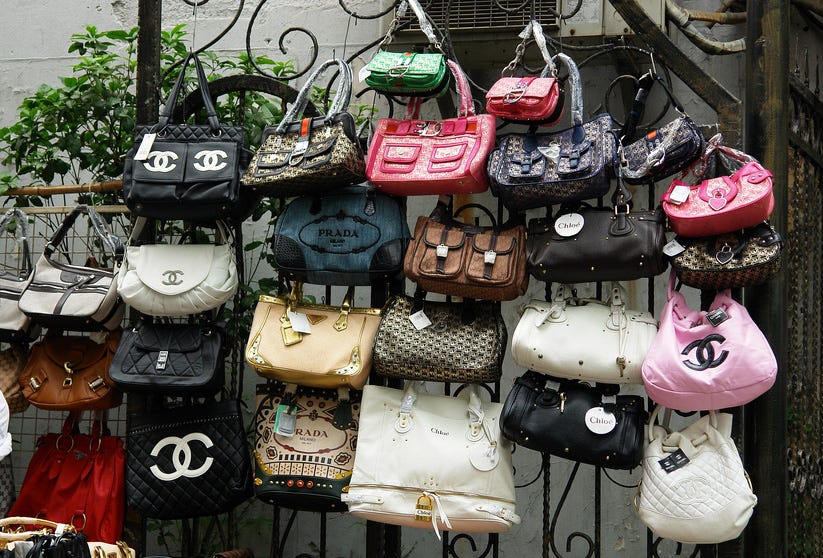The Hidden Cost of Counterfeit Culture: Fashion's Dirty Little Secret
Bianca Foley
The fashion world has a dirty little secret, in the form of dupes (or duplicates). Gen-Z shoppers love a bargain, and the allure of snagging a designer look for a fraction of the price can be hard to resist. The dupe hashtag on TikTok has now been viewed a whopping 2.7 billion times, meaning that dupe “culture” is more than just a trend.
Beneath the surface of these so-called steals lies a tangle of issues impacting both people and the planet. According to First Insight, 62% of Gen Z shoppers prefer to buy from sustainable brands, and a staggering 73% are willing to pay more for sustainable products – so if that is the case, why are they so obsessed with dupes?
The Mirage of Dupes, More Than Just Imitation
So dupe culture, for those who don’t know – refers to the phenomenon where cheaper, often lower-quality versions of high-end products flood the market and it’s nothing new. It’s a quick fix for those craving the luxury aesthetic without the hefty price tag. But while these knock-offs may satisfy a temporary desire, they come with a slew of hidden costs. For years, we have seen fast-fashion companies taking “inspiration” from high-end fashion houses and replicating their looks for a fraction of the cost. Think back to various awards ceremonies you’ve watched over the years, seeing your favourite celebs wearing gorgeous couture pieces, only to see an “inspired” dress hitting the shops within a week…
To think that there were garment workers, being forced to create hundreds of thousands of units and churning them out to high street and fast fashion retailers. There are always going to be issues – from forced labour to quality. Genuine luxury brands invest heavily in craftsmanship, quality materials, and innovative design. In contrast, their fast fashion counterparts cut corners to keep prices down, leading to products that not only wear out quickly but often end up in landfills, contributing to the already staggering amount of textile waste.
The Illusion of Cheap Fashion
The sustainability conversation in fashion has been gaining momentum, with brands and consumers alike advocating for more eco-friendly practices. However, the proliferation of dupes undermines these efforts. Fast fashion brands, which often produce these knock-offs, operate on a model that prioritises speed and low cost over sustainability. This results in a vicious cycle of overproduction and overconsumption, with garments designed to be worn a handful of times before they’re discarded.
Moreover, the environmental impact of producing these counterfeit goods is significant. The rapid turnover of trends necessitates constant production, leading to increased carbon emissions, water consumption, and chemical use. It’s a far cry from the slow fashion movement, which emphasises quality, longevity, and environmental responsibility.
The Human Cost - Who Pays the Price?
While the environmental toll of counterfeit culture is worrying, the human cost is equally distressing. The pressure to churn out trendy items at breakneck speed often falls on the shoulders of garment workers in the global south, predominantly women of colour. These workers are frequently subjected to exploitative conditions, including low wages, long hours, and unsafe working environments.
Luxury brands, on the other hand, generally have more stringent regulations and higher standards for their labour practices, though they are not without their own issues. However, the disparity is stark when compared to fast fashion giants, who, in the race to produce the cheapest goods, often neglect the welfare of their workers.
The stories from factories in countries like Bangladesh and India paint a grim picture. It’s not uncommon to hear of workers labouring for pennies an hour, with little to no job security or basic rights. The Rana Plaza disaster of 2013, where over 1,100 garment workers died in a factory collapse, was a harrowing reminder of the human cost behind our cheap clothes. And yet, the demand for fast, affordable fashion continues unabated.

Luxury vs. Fast Fashion: A Tale of Two Worlds
The stark contrast between luxury brands and their fast fashion counterparts highlights the complexities of the fashion industry. Luxury brands often position themselves as bastions of quality and craftsmanship, with price tags to match. These brands argue that their high prices are justified by the superior materials, skilled labour, and meticulous attention to detail that go into each piece.
Fast fashion, by contrast, democratises style, making trends accessible to the masses at a fraction of the cost. But this accessibility comes with significant drawbacks, primarily in the form of ethical and environmental compromises. The very model that makes fast fashion so appealing – its affordability and trendiness – is also what makes it so damaging.
The Way Forward: Conscious Consumerism
So, what’s a fashion lover to do? It’s clear that our obsession with dupes and counterfeits is unsustainable and unethical. But shifting away from this culture doesn’t mean giving up on style or breaking the bank. It’s about making more informed choices and valuing quality over quantity.
Start by investing in pieces that are timeless and versatile. Quality over quantity is not just a mantra but a practical approach to building a wardrobe that lasts. Support brands that prioritise ethical labour practices and sustainable materials. And when the urge to splurge on the latest trend hits, consider thrifting or shopping from resale platforms – it’s kinder to your wallet and the planet.
Lastly, let’s not forget the power of advocacy. As consumers, we have a voice. Pushing for greater transparency in the fashion industry and supporting policies that protect garment workers can drive meaningful change. It’s time we rethink our relationship with fashion, moving towards a model that values ethics and sustainability as much as aesthetics.
In the end, fashion should be about expressing ourselves and celebrating creativity, not contributing to environmental degradation or human exploitation. By choosing to be conscious consumers, we can enjoy the best of fashion without compromising our values. And that, dear reader, is a trend worth following.
Share This Story
Related Posts

Is Your Home Making You Sick? Why It’s Time to Reset Your Cleaning Routine
Is Your Home Making You Sick? Why It’s Time to Reset Your Cleaning Routine How indoor air pollution and toxic products are harming your health

Did ChatGPT Play a Role in Fueling California’s Wildfires?
Did ChatGPT Play a Role in Fuelling California’s Wildfires? Alice Hartwell Credit: Unsplash Early 2025 headlines were dominated by the devastating wildfires that swept through

Is Outlet Shopping Actually Sustainable? Let’s Discuss
Is Outlet Shopping Actually Sustainable? Bianca Foley Outlet shopping and discount designer stores have long been the ultimate fashion treasure hunt—scoring past-season gems at a

Sustainable Bakeries to Visit in the UK
(Image credit: Mix Interiors) Sustainable Bakeries to Visit in the UK There’s nothing more comforting than indulging in freshly baked goods. But what if you

